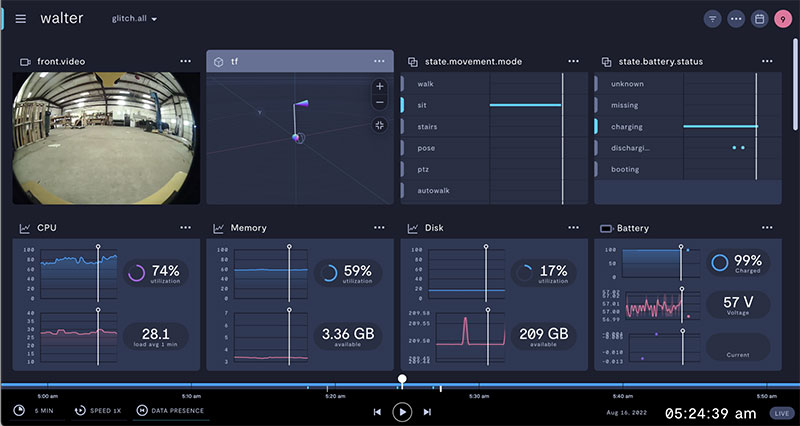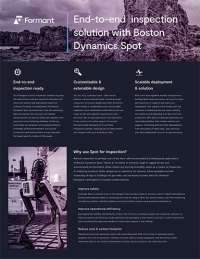Formant enables robot operators to accomplish their most essential jobs during missions, allowing for faster response times, and optimizing the performance of autonomous devices.
The three major jobs that Formant simplifies for its users are monitoring the mission, detecting an issue, and intervening to resolve those issues. Let’s see how Formant helps achieve these goals.
1. Monitoring the mission
After successfully getting your robots up and ready to start on their mission, continuous monitoring of the status of the mission is critical. Whether the mission is as simple as dropping an object off or more complex involving multiple robots, Formant allows the operator to consistently observe the status of the robot and the progress of the task.
From our dashboard, operators can view system statuses including the health of the robot, battery level, hardware usage, and temperature. They can also access rich media, like images and point clouds to view the mission through the robot's eyes. Operators can also visualize any other piece of data they’d like, be they ROS topics or simple data types, or even entirely customize their own dashboard views using our powerful Web Toolkit.

2. Detecting An Issue
Call it Murphy’s Law or just inevitability, but in robot operations, not every mission will go as planned, and when there is an error, it needs to be identified and corrected quickly. Let’s be honest: you may not always be looking at your dashboard during a mission, but Formant dashboards help you ensure you catch every error that occurs with our Events feature.
Events, whether informational or critical errors, can be triggered by setting conditions on data values or using our SDK. When such an error occurs on your robot, you’ll be immediately notified in your Formant dashboard. From there, you have the ability to assess the issue and determine if a correction is needed right away or can be safely ignored.
3. Intervene and Resolve Errors
So an error occurs and needs immediate correction. From your dashboard, you have the ability to resolve any error your robot encounters, on the spot. Whether it be teleoperating a stuck robot, restarting the robot, or launching a new mission entirely, you can immediately step in to get rolling again all in one place.
As your fleet and robot operations scale, so should your monitoring efforts. Read more about how to group and categorize your fleet to improve your observability.
Article topics
Email Sign Up




















